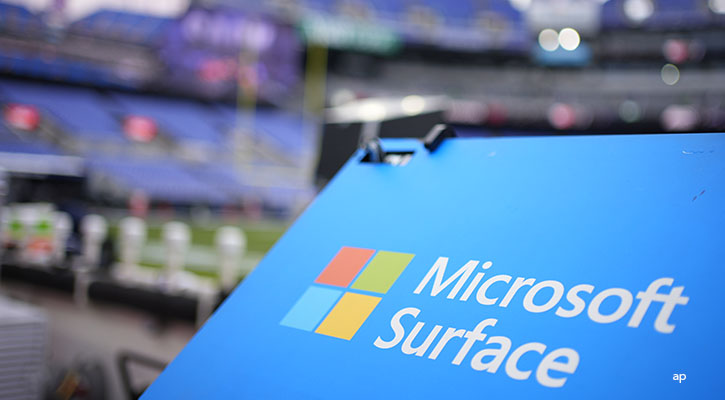Phil Taller comes across as a modest and reserved fellow, but the performance of his fund, the five-star rated Mackenzie US Mid Cap Growth Class, allows him to stand out among giants of the investment world. His fund’s returns on the upside may not be at the top of his category, but it certainly ranks among the best. On the downside, his exemplary resistance gives him few peers.
In 2007 and 2008, when his reference index, the Russell 2500, was down 14% and 21%, he kept his fund above water, up 0.7% and 0.5%. Since then, he has not suffered a single negative year. Though he did lose in the fourth quarter of 2018, he still finished the year with a 12.2% return while the Russell 2500 ended in negative territory: -1.9%. In his fund’s 16 years of existence, his investors have suffered only one minor setback of - 0.1%, and that was in 2005.

Born in Montreal, Taller studied at Waterloo University in mathematics and computer science. His consequent involvement in software companies gave him a keen sensitivity to technology and data. His work in the early 1990s at developing an in-house email system for a brokerage firm allowed him to discover his taste for the investment world. After picking up an MBA from the Schulich School of Business, he landed a job at Bunting Warburg, which acted as a one-stop crash course in finance. “Everyone was in the same room: traders, sales people, associates,” he says. “You saw everything, heard everything. It was a neat way to learn the business.”
Then he wrote a letter to Dina DeGeer, a big name at Trimark, at that time the place to be. She hired him. “It felt like being drafted by the Montreal Canadians,” Taller comments. From there, he moved to Bluewater Management where, eventually, he started his present fund in November 2002 with only $16 million, which has since grown to $3 billion.
He decided to focus his fund on the mid-cap market segment, despite it being relatively unloved. “I often read reviews of specialists who think where money is over- or under-invested. It turns out that people are often under-invested in mid caps. Small caps get all the excitement factor and blue chips get the prestige; mid caps are neglected. It actually helped us.”
An underappreciated and diverse sector
As a growth investor, Taller looks for companies that grow faster than the economy, which to him means entering neglected corners of the market and tapping into hidden potential. “People think that growth investors tend to all crowd into the same things. We try to go out and find something else.” In a segment with a total capitalization of $13.4 trillion, that leaves a lot of space to “find something else”.
It brought him into key sectors with good fundamentals. “We look for solid levels of cash flow that are not too capital intensive, and those tend to concentrate more in technology, health care, and industrials, less in utilities, consumer staples and resources,” Taller notes on the current positioning of his portfolio in a sector with a variety of investment opportunities to move between based on how he sees the state of the market cycle.
For example, in 2011, when the market was still in a pessimistic mood, he increased the cyclicality of the fund: smaller companies with increased beta and higher volatility in sectors that are more in tune with the economic cycle. “Those factors did reasonably well for five years.” But then, in 2016-17, “we started to take action in the other direction,” he notes. We started to think that optimism now constituted a macro risk, especially at a moment when interest rates were increasing, which would lead the economy into a slowdown.” That caused him to trim positions in semiconductors and to lower weightings in financial services, moving toward insurance, which is less cyclical.
That is one ingredient of his “secret sauce” that serves to explain his fund’s exceptional downside resistance. He certainly doesn’t claim to have a crystal ball. “If my job depended on knowing where the market is going, I wouldn’t have a job,” he explains modestly. But sensing the clouds that are starting to press on the market is to a certain extent a sixth sense he has developed. For example, in the lead up to the financial crisis of 2007-2008, “we didn’t predict a crisis, but saw things overheating with too much debt building up and very aggressive lending practices. We were assuming a recession in our model and it made us prioritize defensiveness.”
Other components of his “secret sauce” are not secrets at all: free cash flow analysis and a demanding price discipline. “Earnings have become less and less reliable over the last 20 years. Everybody uses ‘adjusted’ earnings where things are removed, like amortization of intangibles, costs of acquisitions, all unusual items. It’s pretty much the wild west. We focus on the free cash flows a business generates. They’re more difficult to fake. You either have them or you don’t.”
Tradition, with a twist
He uses classic models of discounted cash flow analysis, but with his own optimisation: “Each model is customized to each company,” he says. In insurance, for example, key variables hinge on cost of policy acquisition, whilst in cloud software annual subscriptions and customer retention are key.
The stock prices those models produce are the bible by which he stands. “We just react to price, he asserts. We know nothing of where the market is going. As a stock’s price moves above our model, we tend to sell increasingly. It saves us from pretty bad situations.”
One recent example is Broadridge Financial. “Our model could only justify a price slightly above $100, he recalls. We started to trim it when it reached $70, and we got out completely at $130. The price moved to a point where it became a bit silly. There’s always a price at which a share should be sold. That discipline saves us from stupidity.”
Presently, Phil Taller is not particularly worried by the markets, though the most recent interest rate hikes leave him on the defensive, since they could slow down the economy. But we will know that only in 18 months. “We’re still waiting to see how things will pan out, but we prefer to stay on the cautious side.”
In the meantime, it’s business as usual. “The market has gone up a lot, so there’s not a ton of screaming bargains. But there’s enough to do.”





.jpg)



.jpg)










